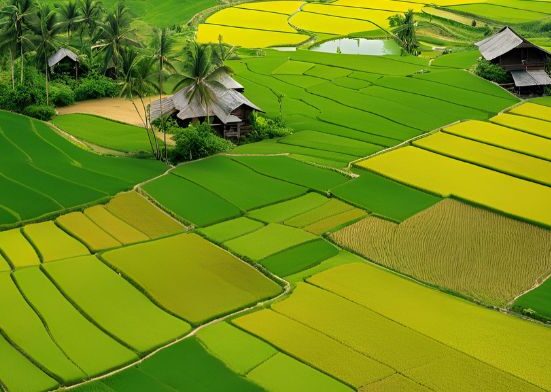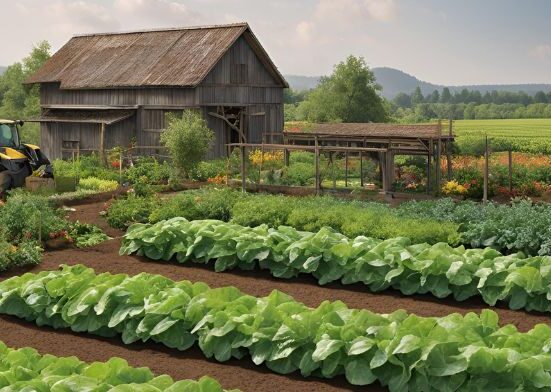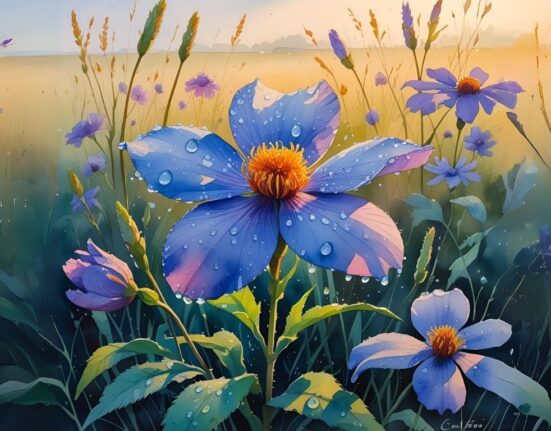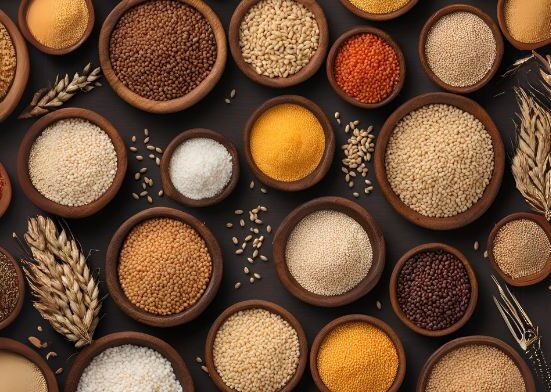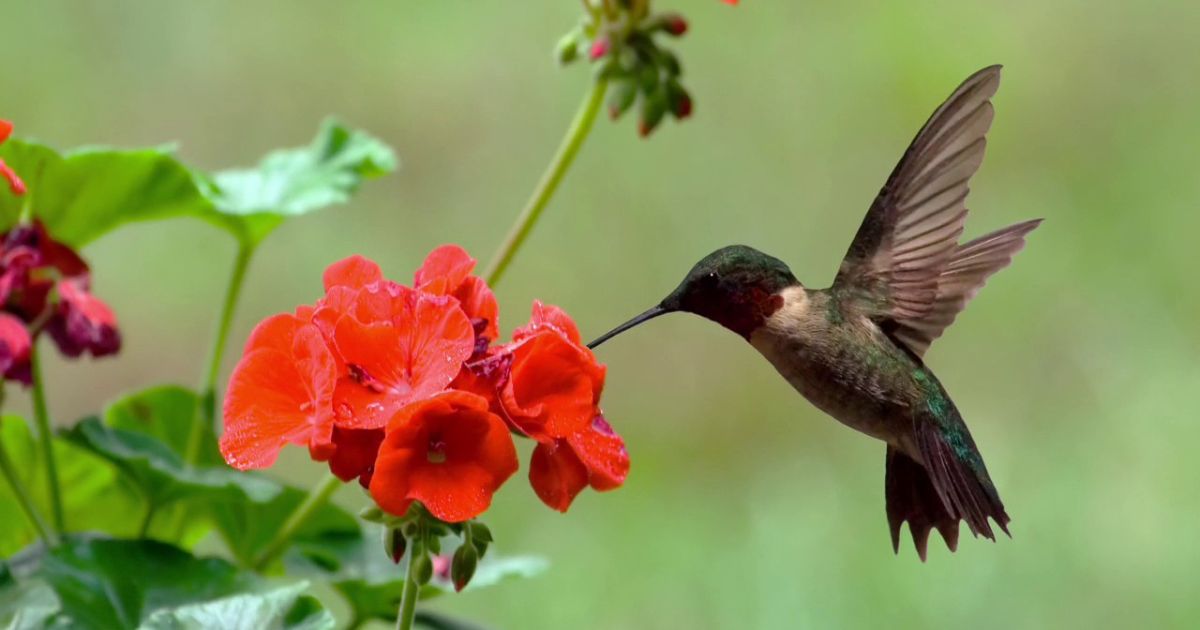Hummingbirds are among the most enchanting visitors to any garden, renowned for their vibrant colors and incredible agility. If you want to invite these tiny jewels to your outdoor space, planting the right flowers is key. Hummingbirds are naturally drawn to bright, tubular blossoms that provide easy access to nectar, their primary food source. From fiery reds to soft pinks and purples, certain plants consistently attract these fascinating birds, making your garden a lively and magical haven. Whether you have a small balcony or a sprawling backyard, knowing which plants hummingbirds love can transform your space into a fluttering paradise. In this guide, we’ll explore the top blooms that hummingbirds find irresistible, helping you create a garden that buzzes with life and color throughout the season.
Why Are Hummingbirds Attracted to Certain Plants?
Hummingbirds are naturally drawn to specific plants due to their color, shape, and nectar production. These tiny birds have a keen eye for bright, vivid colors—especially red, orange, and pink—which signal high-energy nectar sources. Tubular-shaped flowers are beautiful because they match the shape of a hummingbird’s long, slender beak and tongue, allowing easy access to nectar deep within the bloom. Plants rich in nectar provide the essential fuel hummingbirds need to maintain their rapid wingbeats and high fast-growing flowers for hummingbirds metabolism.
Additionally, many of these flowers bloom continuously throughout the season, providing a reliable food source. Some plants even emit subtle scents or have features that deter other pollinators, leaving more nectar for hummingbirds. By selecting flowers with the right combination of colors, shapes, and nectar content, gardeners can create an irresistible haven for these fascinating birds and enjoy their vibrant presence throughout the entire zinnia flower season.
- Tubular-shaped flowers: These accommodate the long beaks and tongues of their pollinators.
- Bright colors: Especially red, orange, and pink.
- High-nectar content: Not all flowers offer the same nectar payoff.
Best Flowering Plants That Attract Hummingbirds
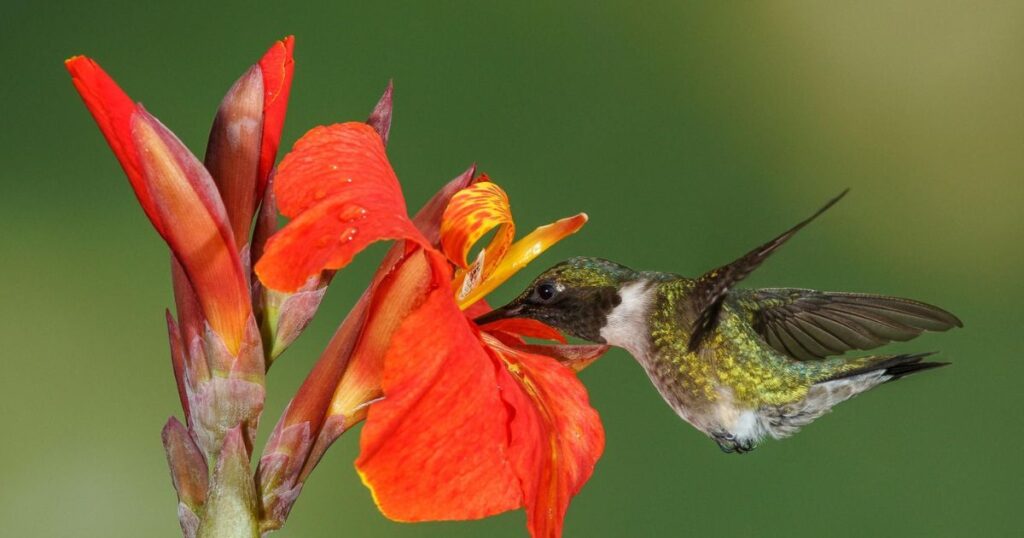 To bring the magic of hummingbirds to your garden, planting the right flowers is crucial. Hummingbirds are drawn to brightly colored, nectar-rich blooms—especially in shades of red, orange, and pink. Some of the best flowering plants for attracting these energetic pollinators include trumpet vine, bee balm, salvia, cardinal flower, and columbine. These plants not only provide ample nectar but also have tubular flowers that perfectly suit a hummingbird’s long beak and tongue. Native perennials, such as penstemon and coral honeysuckle, are also excellent choices, offering both beauty and hummingbird october flower.
To bring the magic of hummingbirds to your garden, planting the right flowers is crucial. Hummingbirds are drawn to brightly colored, nectar-rich blooms—especially in shades of red, orange, and pink. Some of the best flowering plants for attracting these energetic pollinators include trumpet vine, bee balm, salvia, cardinal flower, and columbine. These plants not only provide ample nectar but also have tubular flowers that perfectly suit a hummingbird’s long beak and tongue. Native perennials, such as penstemon and coral honeysuckle, are also excellent choices, offering both beauty and hummingbird october flower.
By picking a range of blooming plants from spring through fall, you’ll create a continuous nectar source that keeps hummingbirds coming back. Add in a few shrubs or small trees for perching and nesting, and you’ll turn your garden into a hummingbird haven filled with color, life, and the delightful flutter of tiny wings.
Bee Balm (Monarda)
A magnet for hummingbirds, bee balm produces clusters of tubular flowers in bright shades of red, pink, and purple. Native to North America, it thrives in sunny gardens and provides nectar-rich blossoms from mid to late what to plant to attract hummingbirds summer.
- Bloom Time: Summer
- Sun Needs: Full sun to part shade
- Perennial or Annual: Perennial
- Bonus: Also attracts butterflies and bees
Salvia (Sage)
Salvia is a hummingbird favorite thanks to its long blooming period and plentiful nectar. Choose red or pink varieties, such as Salvia splendens or Salvia greggii, for the best results.
- Bloom Time: Spring through fall
- Sun Needs: Full sun
- Perennial or Annual: Both types are available
- Bonus: Drought-tolerant and low-maintenance
Trumpet Vine (Campsis radicans)
The trumpet vine yields trumpet-shaped blossoms, as the name suggests. Perfect for hummingbirds. Its vigorous growth makes it ideal for use as a fence, arbor, or trellis.
- Bloom Time: Summer to early fall
- Sun Needs: Full sun
- Perennial or Annual: Perennial (woody vine)
- Bonus: Fast-growing and bold
Zinnias
Zinnias are easy to grow from seed and bloom profusely through summer. Their open, daisy-like flowers don’t have a tubular shape, but hummingbirds still visit them often for nectar.
- Bloom Time: Summer to frost
- Sun Needs: Full sun
- Perennial or Annual: Annual
- Bonus: Great for cutting and adds vibrant color
Cardinal Flower (Lobelia cardinalis)
With striking red spikes of flowers, the cardinal flower is tailor-made for hummingbirds. It prefers moist soil and is ideal for rain gardens or near water features.
- Bloom Time: Late summer
- Sun Needs: Full sun to part shade
- Perennial or Annual: Perennial
- Bonus: Native wildflower with bold flair
Columbine (Aquilegia)
Columbine’s unique, spurred flowers are early bloomers that hummingbirds adore. Plant them in woodland gardens or shady borders.
- Bloom Time: Spring
- Sun Needs: Part shade
- Perennial or Annual: Perennial
- Bonus: Comes in a variety of colors and hybrid forms
Fuchsia
A top pick for containers and hanging baskets, fuchsia features delicate, dangling flowers in shades of pink, purple, and white. Its nectar-rich blooms are perfect for hummingbirds hovering in midair.
- Bloom Time: Spring to fall
- Sun Needs: Part shade
- Perennial or Annual: Annual in cold climates
- Bonus: Shade-friendly and great for porches
Penstemon (Beardtongue)
Penstemon offers tubular blooms in shades of red, purple, and pink, and thrives in well-drained soil. Its upright growth habit and vibrant color make it a standout in the garden.
- Bloom Time: Spring to summer
- Sun Needs: Full sun
- Perennial or Annual: Perennial
- Bonus: Deer-resistant and heat-tolerant
Honeysuckle (Lonicera)
Fragrant and filled with nectar, honeysuckle vines (especially Lonicera sempervirens) are hummingbird magnets. They twine beautifully around trellises and arbors.
- Bloom Time: Spring through summer
- Sun Needs: Full sun
- Perennial or Annual: Perennial vine
- Bonus: Delightfully fragrant
Coral Bells (Heuchera)
While grown primarily for their colorful foliage, many varieties of coral bells produce small bell-shaped flowers on tall spikes that hummingbirds enjoy.
- Bloom Time: Spring to summer
- Sun Needs: Part shade
- Perennial or Annual: Perennial
- Bonus: Adds texture and foliage color to shady spots
Native Plants: The Secret Weapon
Native plants are nature’s quiet champions, perfectly adapted to thrive in their local environments. These botanical powerhouses require less water, fewer chemicals, and minimal maintenance compared to non-native species. Their deep-rooted resilience makes them the secret weapon for gardeners and landscapers seeking sustainability and beauty in one package. Native plants support local ecosystems by providing essential food and shelter for pollinators, such as bees, butterflies, and hummingbirds, as well as birds and small plant that attracts hummingbirds wildlife.
They help prevent soil erosion, improve air and water quality, and naturally resist pests and diseases. Whether you’re designing a backyard garden or restoring a natural landscape, incorporating native plants leads to healthier, more vibrant, and ecologically balanced spaces. As climate change and habitat loss become pressing concerns, choosing native plants isn’t just a gardening trend — it’s a decisive, proactive step toward environmental conservation and long-term biodiversity. Let native plants work for you and the Zinnia Perennial: A Colourful Bloom That Keeps Coming Back planet.
Color and Bloom Strategy: A Year-Round Buffet
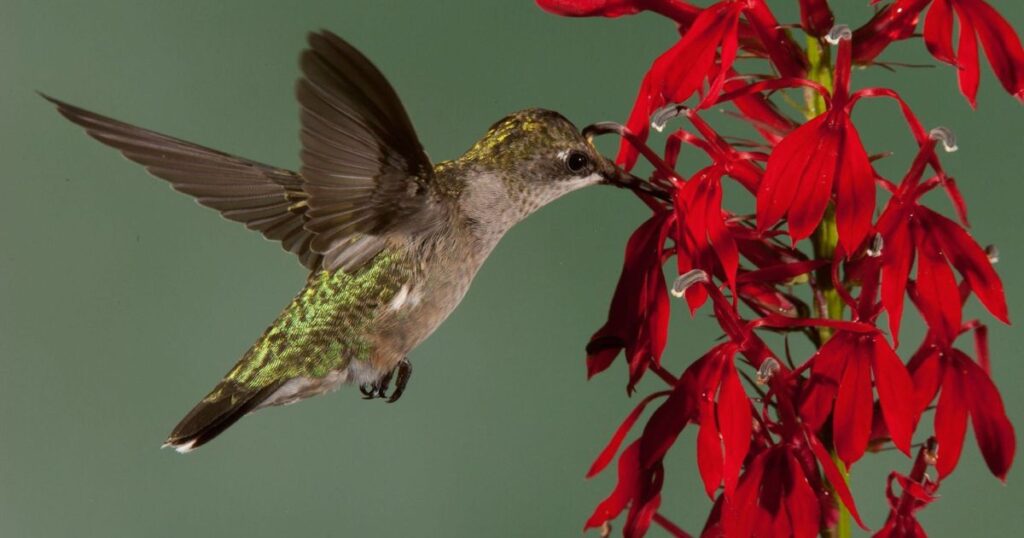 A well-planned color and bloom strategy transforms your garden into a year-round haven for pollinators, such as hummingbirds, bees, and butterflies. By selecting a mix of early spring, summer, and fall-blooming plants in a variety of vibrant hues—especially reds, oranges, purples, and pinks—you ensure continuous color and nectar throughout the seasons. Spring bulbs like crocus and columbine kick off the bloom cycle, followed by mid-season stars like bee balm, salvia, and plants that attract hummingbirds and butterflies zinnias.
A well-planned color and bloom strategy transforms your garden into a year-round haven for pollinators, such as hummingbirds, bees, and butterflies. By selecting a mix of early spring, summer, and fall-blooming plants in a variety of vibrant hues—especially reds, oranges, purples, and pinks—you ensure continuous color and nectar throughout the seasons. Spring bulbs like crocus and columbine kick off the bloom cycle, followed by mid-season stars like bee balm, salvia, and plants that attract hummingbirds and butterflies zinnias.
Late-season favorites such as cardinal flower and autumn sage keep the garden lively into fall. Incorporating evergreen shrubs, flowering perennials, and reseeding annuals provides consistent structure and food sources. This layered approach not only keeps your landscape colorful and visually engaging but also supports vital wildlife throughout the year. With thoughtful planning, your garden becomes a living buffet, where something is always blooming and nourishing the local ecosystem, regardless of the month.
Spring
- Columbine
- Salvia
- Bleeding heart
Summer
- Bee balm
- Zinnias
- Trumpet vine
- Penstemon
Fall
- Salvia (late varieties)
- Cardinal flower
- Mexican bush sage
Mixing early, mid, and late-season bloomers ensures there’s always a reason for hummingbirds to visit your yard.
Planting Tips: Create a Hummingbird-Friendly Garden
Transform your outdoor space into a hummingbird haven with smart planting tips designed to attract these dazzling, nectar-loving birds. Start by selecting vibrant, tubular flowers like bee balm, salvia, trumpet vine, and cardinal flower—favorites for their rich nectar and bright colors—planting them in clusters to make it easier for hummingbirds to spot the blooms from the air. Choose native plants for your region, as they are better adapted to local conditions and offer the right food sources.
Provide blooms from early spring to fall to ensure a continuous supply of nectar. Avoid pesticides, as they can harm hummingbirds and the insects they feed on. Add perches, such as thin branches or garden stakes, to provide resting spots between feedings. Lastly, include a water feature, such as a misting fountain, to offer refreshment. With these simple tips, your garden can become a lively, colorful sanctuary that hummingbirds return to year after year.
Plant in Clumps
Plant in Clumps” refers to the gardening technique where multiple plants of the same species are grouped closely together in small clusters or bunches. This method creates a natural, dense appearance that enhances visual impact and attracts pollinators, such as bees and butterflies. Clumping helps plants support each other, retain soil moisture, and reduce weed growth. It’s especially popular for perennials, grasses, and flowering plants, adding texture and fullness to garden beds or borders. Planting in clumps can also improve microclimates around the plants, promoting healthier growth and making maintenance easier by concentrating care in specific areas.
Go Vertical
Go Vertical” inspires embracing upward growth, whether in personal development, business, or creativity. It encourages reaching new heights by focusing on elevation rather than spreading thin. This mindset promotes building strong foundations while climbing steadily toward ambitious goals. Going vertical means prioritizing depth over breadth—deepening skills, expanding knowledge, and enhancing quality. It symbolizes breaking barriers, pushing limits, and standing tall in the face of challenges. Whether applied to urban gardening, career advancement, or innovative design, “Go Vertical” motivates adopting a perspective that maximizes space, potential, and impact by thinking and growing upward with intention and purpose.
Avoid Pesticides
Avoiding pesticides is a crucial step toward healthier living and environmental protection. Pesticides, often used in conventional farming, can leave harmful residues on fruits and vegetables that may affect human health over time. They also disrupt ecosystems by harming beneficial insects, pollinators, and soil life. Choosing organic or pesticide-free produce reduces exposure to these chemicals and supports sustainable farming practices. Additionally, growing your food using natural pest control methods, such as companion planting and neem oil, can further minimize pesticide use. Embracing pesticide avoidance promotes cleaner food, safer ecosystems, and a healthier planet for future hummingbird flowers attract generations.
Add a Water Feature
Hummingbirds enjoy shallow misters or gently bubbling fountains. They’ll use them for bathing and cooling off on hot days.
Include Perches
Add small branches, trellises, or wires where hummingbirds can rest between feedings. They’re very territorial and need spots to guard their plants to attract hummingbirds territory.
Feeders vs. Flowers: What Works Best?
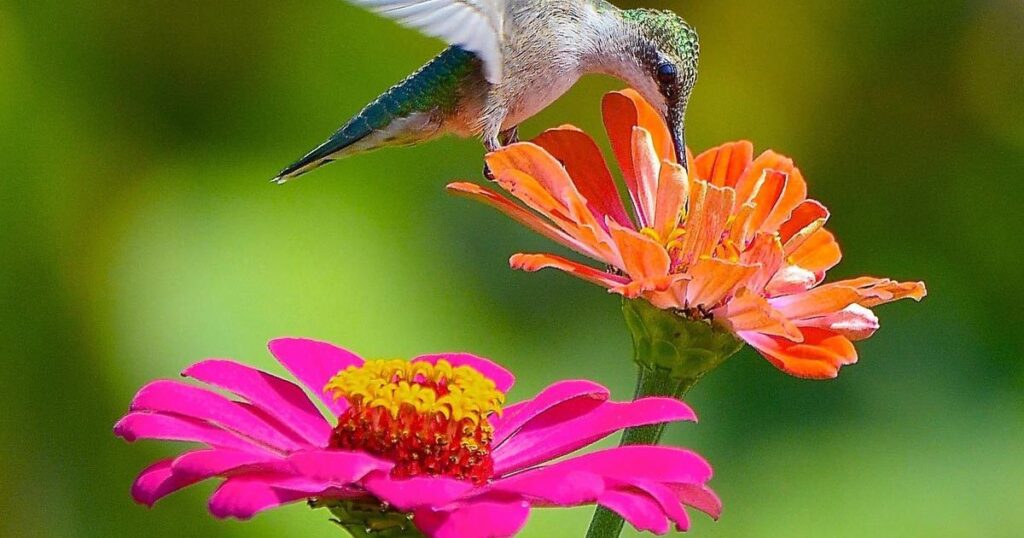 When attracting hummingbirds or pollinators, the debate between feeders and flowers is a common one. Feeders offer a convenient, consistent source of nectar, especially useful during migration seasons or when natural blooms are scarce. They’re easy to maintain and allow you to observe birds up close. However, feeders require regular cleaning and fresh sugar water to prevent harm. On the other hand, flowers offer a more natural and sustainable solution. Nectar-rich blooms like salvia, bee balm, and trumpet vine not only attract hummingbirds but also support bees and flowers that draw hummingbirds and butterflies butterflies.
When attracting hummingbirds or pollinators, the debate between feeders and flowers is a common one. Feeders offer a convenient, consistent source of nectar, especially useful during migration seasons or when natural blooms are scarce. They’re easy to maintain and allow you to observe birds up close. However, feeders require regular cleaning and fresh sugar water to prevent harm. On the other hand, flowers offer a more natural and sustainable solution. Nectar-rich blooms like salvia, bee balm, and trumpet vine not only attract hummingbirds but also support bees and flowers that draw hummingbirds and butterflies butterflies.
Flowers offer color, fragrance, and beauty to your garden while contributing to local biodiversity. Ultimately, the best approach combines both: vibrant blooms to create a pollinator-friendly habitat and feeders to supplement food sources. This strategy ensures your space remains active, healthy, and irresistible to winged visitors throughout the season. So, why choose one when both can work in harmony?
Bonus Plants That Support the Ecosystem
In addition to the popular garden favorites, several lesser-known plants offer powerful benefits to the ecosystem. These bonus plants contribute to biodiversity, improve soil health, attract beneficial insects, and provide food and shelter for wildlife. For instance, milkweed supports monarch butterflies by offering a breeding ground and nectar source. Clover enriches the soil with nitrogen while feeding pollinators. Native grasses stabilize soil and offer habitat for birds and insects. Goldenrod, often mistaken for a weed, is a late-season nectar source for bees and hummingbird plants attract butterflies.
Elderberry bushes not only provide food for birds but also enrich the soil with organic matter. Even herbs like dill and fennel attract predatory insects that keep pests in check. Planting a diverse range of these bonus species encourages a balanced, thriving garden environment. Supporting the ecosystem with these plants not only benefits nature but also strengthens your own garden’s resilience and productivity in a sustainable, eco-friendly way.
Regional Planting Tips for Hummingbirds
Creating a hummingbird-friendly garden means tailoring your plant choices to your local climate and growing zone. In the Southeast, vibrant flowers like trumpet creeper, coral honeysuckle, and red salvia thrive in the heat and humidity, offering ample nectar. In the Southwest, opt for drought-tolerant plants like penstemon, desert willow, and agave, which flourish in dry, sunny conditions. The Pacific Northwest’s cooler, wetter climate supports fuchsia, columbine, and bee balm—ideal for attracting plant that attract hummingbirds hummingbirds.
In the Midwest, hardy blooms such as cardinal flower, phlox, and zinnias add color and nectar to summer gardens. For the Northeast region, tubular blooms such as monarda, jewelweed, and native honeysuckles are excellent choices. Always select native, pesticide-free plants and stagger bloom times from early spring to fall to provide a steady food supply. Incorporating feeders, water sources, and sheltered nesting spots enhances your chances of welcoming these energetic pollinators throughout the hummingbird attracting plants seasons.
How to Design a Hummingbird-Friendly Garden
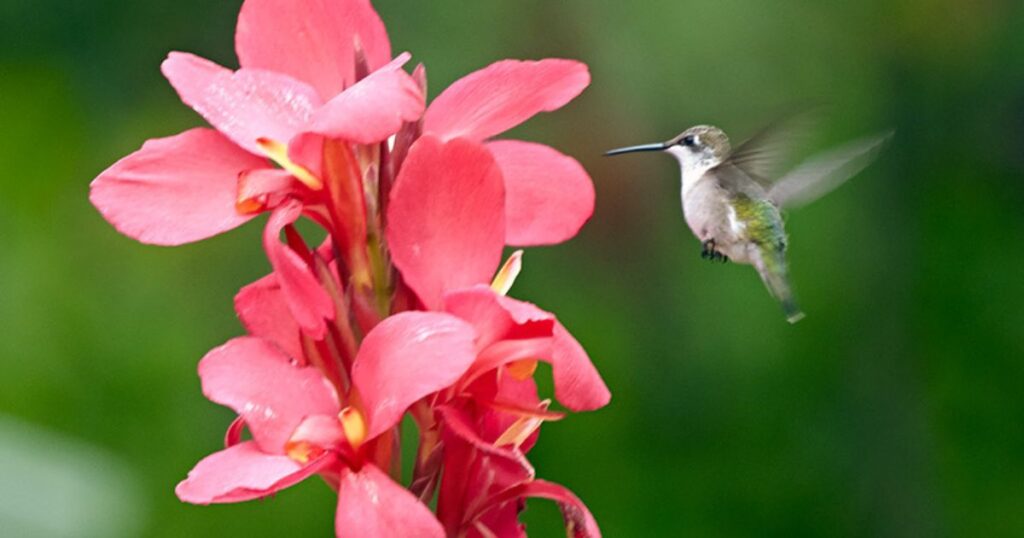
Designing a hummingbird-friendly garden is all about creating a vibrant, welcoming space filled with nectar-rich blooms and natural elements that attract and sustain these tiny, energetic birds. Begin by selecting bright, tubular flowers such as bee balm, salvia, columbine, and trumpet vine—red, orange, and pink hues are especially irresistible to hummingbirds. Arrange flowers in clusters for greater visibility, ensuring continuous blooms from spring through fall and a consistent flow of nectar.
Incorporate native plants, which are more recognizable and beneficial to local hummingbird species. Avoid pesticides, as they can harm both birds and their insect food sources. Add perches, such as small branches or decorative twigs, and consider installing a hummingbird feeder filled with homemade nectar (4 parts water to 1 part sugar, without dye). A gentle misting fountain or shallow water feature provides a refreshing drink and bath spot. With thoughtful planning, your garden can become a haven for hummingbirds.
Common Mistakes to Avoid
If you’re not seeing hummingbirds, consider these common missteps:
- Planting the wrong colors – Red is best, but orange, pink, and purple are good too.
- Not offering enough blooms – A few scattered flowers may not be enough.
- Using pesticides – These can reduce insect populations and nectar quality.
- Placing feeders too close together – Space them out to avoid territorial disputes.
- Forgetting vertical structure – Hummingbirds need places to perch and hide.
Conclusion:
Hummingbirds are naturally drawn to vibrant, nectar-rich flowers that provide both food and shelter. Plants like trumpet vine, bee balm, salvia, and columbine top the list for attracting these dazzling birds. Their bright colors—especially reds, oranges, and pinks—signal the presence of abundant nectar, making gardens lively with the visits of hummingbirds. By planting a variety of these blooms, gardeners can enjoy year-round hummingbird activity while supporting local ecosystems. Whether you have a small balcony or a large yard, choosing the right plants creates a beautiful, hummingbird-friendly haven that benefits both nature and your outdoor space.
FAQ:
What Types of Plants attract Hummingbirds the Most?
Hummingbirds are especially attracted to brightly colored, tubular flowers that provide easy access to nectar. Common plants include bee balm, trumpet vine, columbine, salvia, and hummingbird mint.
Why do Hummingbirds Prefer to red Flowers?
Hummingbirds have excellent color vision and are particularly drawn to red and other bright colors because these flowers often produce abundant nectar, making them easier for hummingbirds to spot.
Can Hummingbirds be Attracted with Native Plants?
Yes! Native plants are often the best choice for attracting local hummingbirds because they have co-evolved with these birds, providing the nectar and habitat they require. Examples include cardinal flower, coral honeysuckle, and fireweed.
Are there Specific Flowering Seasons that are Better for Attracting Hummingbirds?
Hummingbirds are typically attracted to flowers blooming in spring and summer, when nectar is plentiful. A consistent food supply during their trip is ensured by planting a range of varieties that bloom at different times.
Do Hummingbirds Prefer Wildflowers or Garden Plants?
Both! Hummingbirds are attracted to any nectar-rich, tubular flowers, whether wild or cultivated. Garden plants, such as fuchsia, penstemon, and snapdragon, are favorites alongside wildflowers.



